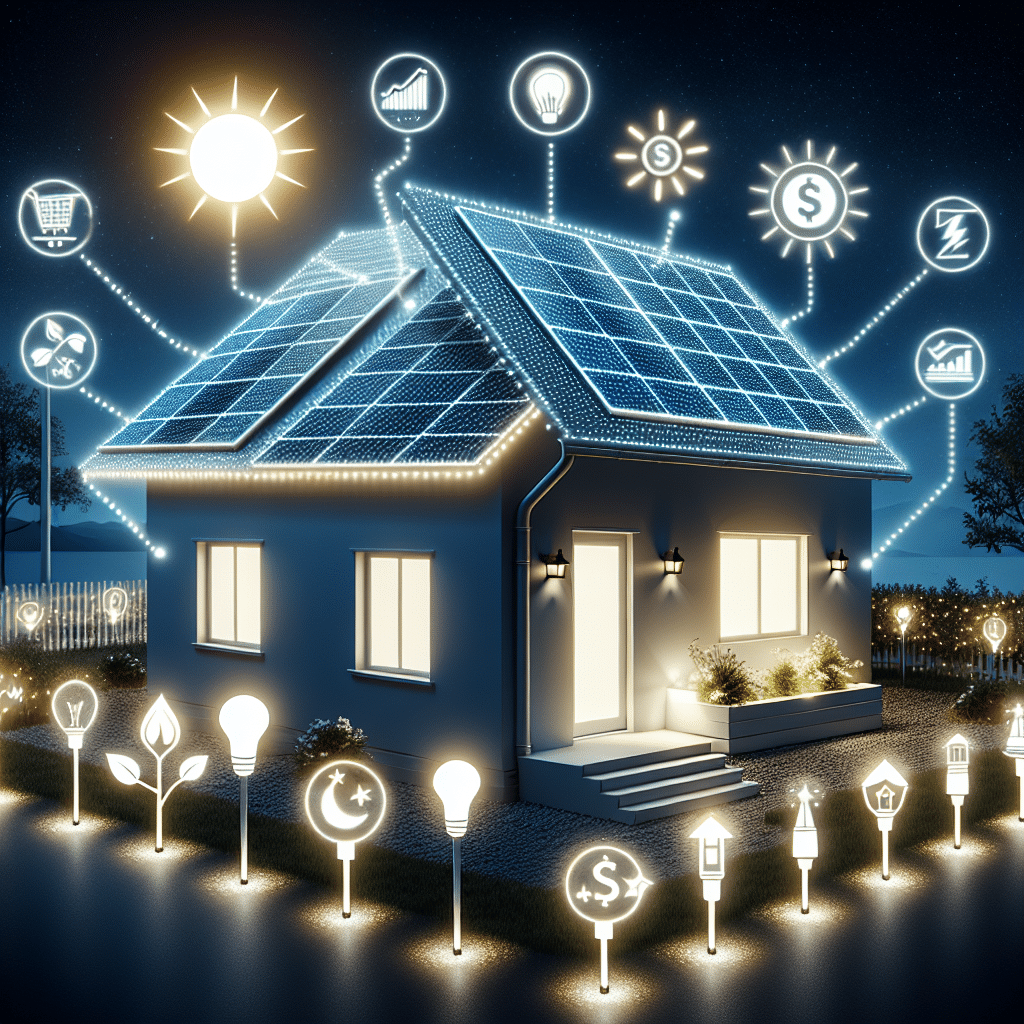Understanding Solar-Powered Lighting for Households
What is Solar-Powered Lighting?
Solar-powered lighting utilizes photovoltaic cells to convert sunlight into electricity, which in turn powers lights. This sustainable energy source has gained popularity in recent years due to its cost-effectiveness, environmental benefits, and ease of installation.
Types of Solar-Powered Lighting
-
Solar Outdoor Lights
- Pathway Lights: Ideal for illuminating pathways, these lights come in various designs and brightness levels.
- Flood Lights: Perfect for security purposes, solar flood lights can illuminate large areas and have motion sensors for added security.
- Solar Wall Lights: Often used to highlight areas like gardens, garages, or back patios, these fixtures provide aesthetic appeal along with functionality.
-
Solar Indoor Lights
- Solar Ceiling Lights: Best for fixed locations where sunlight exposure is guaranteed, typically in rooms with large windows.
- Solar Table Lamps: Convenient for indoor usage, these lamps can be charged via solar energy during the day.
-
Solar String Lights
- Great for decorative purposes, solar string lights can be used for events, patios, or garden landscapes, adding warmth and ambiance to evening gatherings.
Key Benefits of Solar-Powered Lighting
-
Energy Efficiency: Solar lighting reduces reliance on grid power, resulting in considerable savings on electricity bills.
-
Environmentally Friendly: Utilizing renewable energy sources decreases the carbon footprint, promoting sustainability.
-
Low Maintenance: Once installed, solar lights typically require minimal maintenance, often only needing occasional cleaning.
Location, Location, Location
-
Sunlight Exposure
- Identify locations that receive maximum sunlight during the day. Avoid shaded areas caused by trees, buildings, or other structures.
-
Testing the Area
- Before installation, ensure you test the solar unit for several days in potential locations to see how it responds to sunlight.
Mounting Techniques
-
Height Considerations
- For pathway and flood lights, a height of 8-12 feet can maximize light distribution while minimizing obstruction.
-
Surface Choices
- Use sturdy surfaces like concrete or wood for mounting solar units to prevent wear and tear from weather conditions.
Choosing the Right Solar Lighting
Determine Your Needs
-
Purpose of Lighting
- Consider why you need solar lighting. Is it for security? Aesthetic appeal? Specific tasks like gardening or outdoor living?
-
Brightness Levels
- Energy output varies among solar lights. Assess the lumens produced by the fixtures to ensure they meet your illumination needs.
Selecting Quality Products
-
Battery Types
- Look for solar lights that use lithium-ion batteries as they tend to have longer life spans and better performance than traditional lead-acid batteries.
-
Weather Resistance
- Ensure that your chosen lights are rated for outdoor use and can withstand different weather conditions.
Maximizing Solar Lighting Efficiency
Maintenance Best Practices
-
Cleaning the Panels
- Periodically clean the solar panels with a soft cloth to remove dirt and dust, allowing maximum sunlight absorption.
-
Battery Maintenance
- Monitor battery performance; replace them as needed to avoid diminished brightness.
Utilizing Advanced Features
-
Motion Sensors
- Choose models with motion sensors for increased security, as they save energy by turning on only when movement is detected.
-
Dusk-to-Dawn Sensors
- Lights with built-in dusk-to-dawn sensors turn on automatically at sunset and turn off at sunrise, conserving energy during daylight.
Solar Lighting in Landscaping
Decoration and Functionality
-
Highlighting Features
- Use solar lights to highlight trees, flower beds, or garden statues, adding depth to your landscape design.
-
Defining Spaces
- Utilize solar pathway and wall lights to define outdoor spaces, ensuring safe navigation during the night.
Seasonal Considerations
-
Winter Preparations
- For areas with snow, position lights above snow levels or clear snow from the pathway to ensure uninterrupted solar energy absorption.
-
Summer Usage
- During summer, consider adjusting light placements if nearby trees have bloomed, causing shade issues.
Cost Considerations
Initial Investment vs. Long-Term Savings
-
One-Time Costs
- The cost of solar-powered lights can be higher initially; however, they can often offer savings within the first couple of years through reduced energy bills.
-
Government Incentives
- Check for local or national incentives that subsidize the cost of purchasing solar lighting products.
Common Misconceptions About Solar Lighting
Debunking the Myths
-
Low Brightness Levels
- Many people believe solar lights are too dim. In reality, with advancements in technology, many solar lights now provide sufficient illumination, rivaling traditional electric lighting.
-
Difficult Installations
- Contrary to common beliefs, solar lights are typically user-friendly and easy to install, requiring minimal tools and expertise.
Conclusion
With the right information and approach, solar-powered lighting can significantly enhance your household. By considering these tips, homeowners can ensure effective solar lighting solutions that meet both decorative and functional needs while contributing to a sustainable environment. The transition to solar lighting is a smart choice, offering numerous benefits for modern households looking to reduce energy costs and environmental impact.
